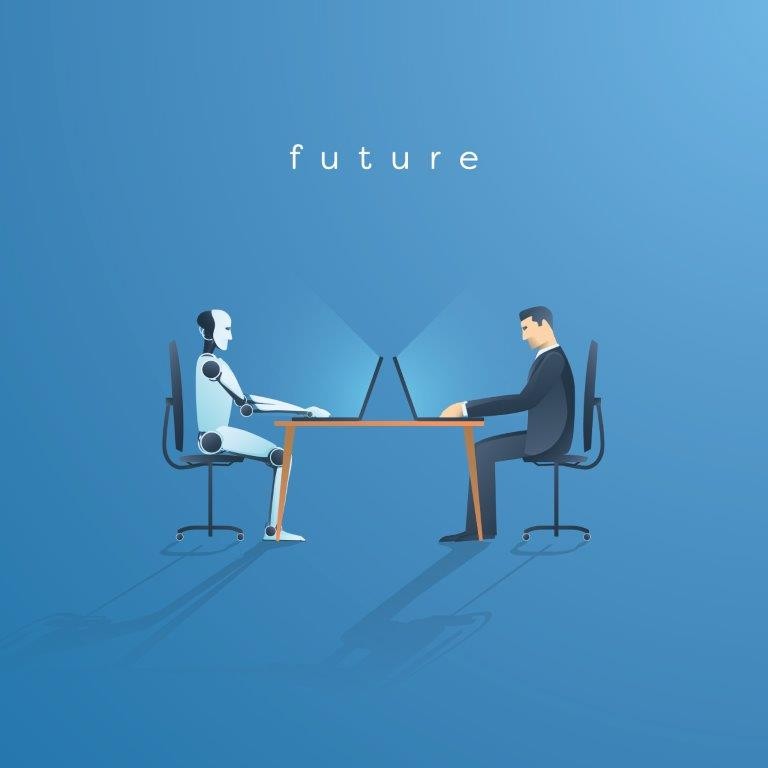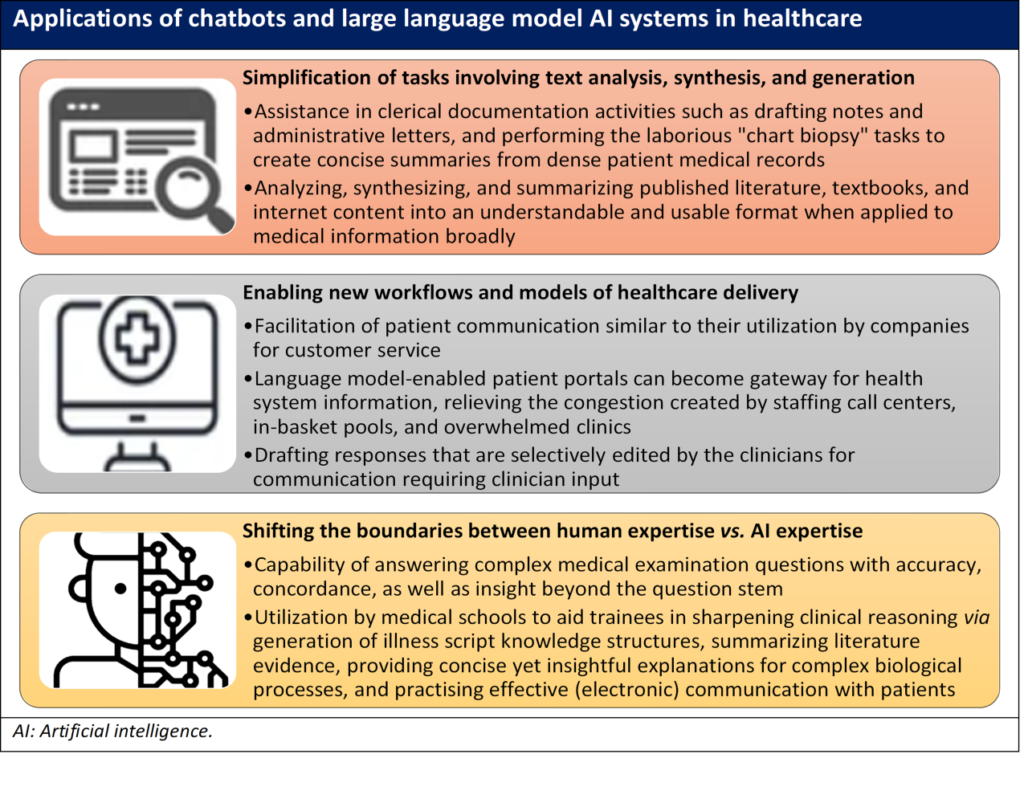
The potential of large language model artificial intelligence (AI) systems in medicine has been recognized by the introduction of chatbots, with proficient language manipulation and knowledge processing capabilities. The underlying base model technology of chatbots reflects a disruptive technology likely to change our working and living conditions, although we must be aware of its considerable limitations. The emerging AI systems can hopefully help in reducing laborious tasks that overpower modern medicine, and thus, allow physicians to redirect their focus on treating patients.
In today’s world, clinicians face exhaustion caused by electronic medical records and documentation burden. It would thus be a boon to have a personal scribe for drafting progress notes, translating patient instructions, summarizing literature, completing authorization paperwork, and responding to never-ending in-basket messages. This imaginary scenario could become a reality with the rapid development of large language model AI systems. Large language models represent the key class of machine learning models trained in autocomplete tasks. When these models are given the words “coronary artery”, they can predict next word to be “disease”, “bypass graft”, or “calcification” based on statistical parameters learnt from previous training data text on frequency of those words appearing together. It is particularly noteworthy for the medical community that these AI systems perform at a level that surpasses the US Medical Licensing Examination while producing responses to patient questions posted on a social media forum with advanced quality and higher empathy compared to the responses by human physicians.
The applications of large language model systems in healthcare include simplifying tasks involving text analysis, synthesis, and generation, enabling new workflows and models of healthcare delivery, and shifting boundaries between human expertise and AI expertise (Graphic).

Along with advantages, these systems have a great potential for disruption and uncertainty. These systems have several drawbacks such as inaccuracy or bias, considering how language deeply affects our way of thinking, behaving, and communicating, thus being prone to confabulation (assembling coherent strings of words into sentences that sound believable while being completely fabricated), and patients bypassing healthcare systems by directly consulting language models for medical advice similar to the case with internet searches.
Clinical implications
- The upcoming generation of healthcare providers must be familiar with the capabilities, limitations, and implications of AI technologies for their effective use in healthcare. There should be awareness among the physicians regarding the potential risks of inaccurate and biased results arising from blind acceptance as well as rejection.
- We are in an era of abundant information but scarcity of time and human connection as well as medical practice being beyond just processing information and associating words with concepts. Thus, emerging AI systems can likely reduce laborious tasks of the physicians and enable them to strengthen physician-patient interaction and cater to the well-being of the patients.
(Source: Li R, Kumar A, Chen JH. How chatbots and large language model artificial intelligence systems will reshape modern medicine: Fountain of creativity or pandora’s box? JAMA Intern Med. 2023. Doi: 10.1001/jamainternmed.2023.1835)
